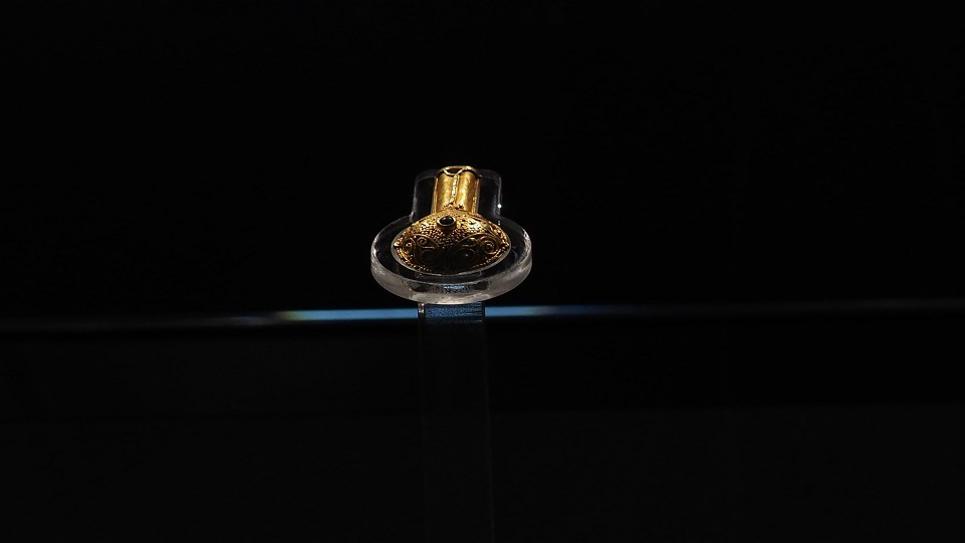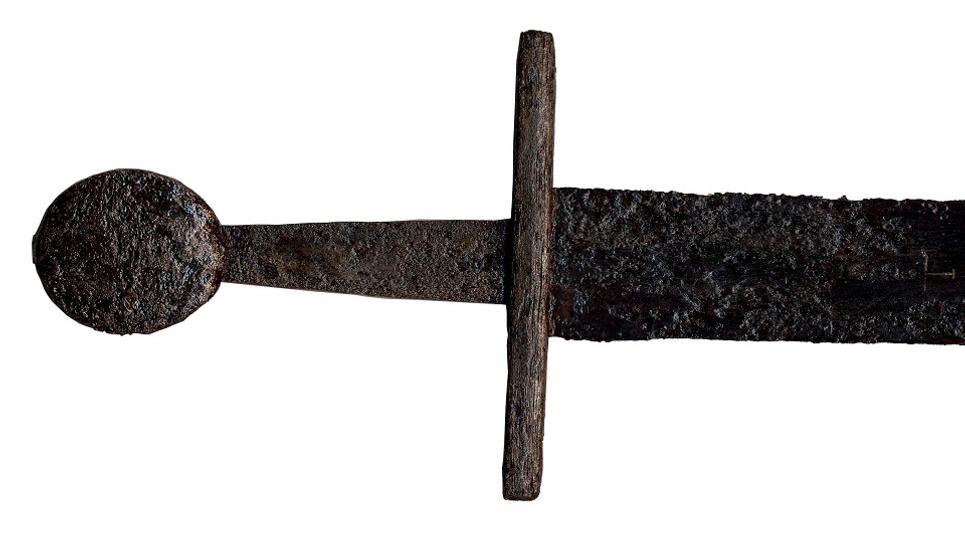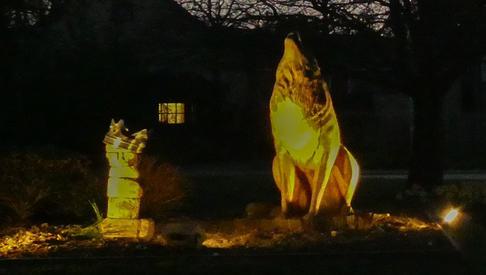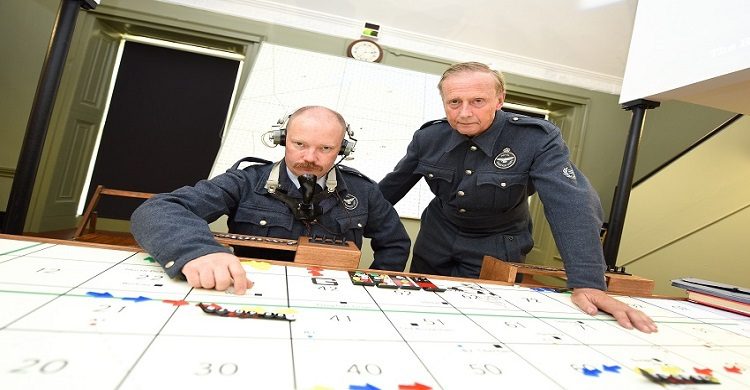
Back to Blogs
Discover
Suffolk's Remarkable Discoveries
From Anglo-Saxon helmets and coins to spoons, ingots and torcs - discover the historical treasures that have been found here in Suffolk and the fascinating stories that go along with them...
West Stow Anglo Saxon Village

West Stow Anglo Saxon Village
Discovered in the quiet Suffolk village of West Stow Anglo Saxon Village, evidence of human habitation here can been seen from the Mesolithic through the Neolithic, Bronze Age, Iron Age and Romano-British period. However the site is most famous for being the setting of a small Anglo-Saxon village from the 5th - 7th century. Here once stood around 70 sunken-featured buildings which had been constructed on the site, along with 8 halls. The site later became abandoned and became farmland in the late medieval period.
It wasn't until 1849 that the site garnered antiquarian interest, when a nearby Anglo-Saxon cemetery was discovered. Initially, excavations of Romano-British pottery kilns took place in the late 19th and mid-20th centuries, before the Anglo-Saxon settlement was revealed between 1956 and 1972. Following the completion of the excavation, it was decided that the village would be reconstructed on the site, and in 1999, the site was opened to the public with a new visitor's centre, museum and cafe.
Discover more at West Stow Anglo Saxon Village website.
Edmund Jewel

Edmund Jewel - (c) Sue Warren
When times allow, a visit to Bury St Edmunds' Moyse's Hall Museum is a must! For here you can see an extremely rare piece of jewellery with possible links to St Edmund himself.
The ornate gold jewel, known as the 'Edmund Jewel' may have even been used by the great king himself and was discovered by someone metal detecting in a field in Drinkstone in 2014.
It is believed to be an aestal, a 9th century pointer used by people in high status for reading at a time when the majority of people were illiterate. Aestals themselves are believed to be extremely rare – there are thought to be less than 10 in Europe.
The Edmund Jewel dates back to the ninth century, Edmund was martyred in 869AD, so its unknown whether the jewel was made before or after his death.
It was found where what would have been part of the landholdings of the Abbey of St Edmund; land that some academics have suggested originally had connections to the King himself, while the rarity of the Jewel, coupled with its purpose means it is likely that, if it did not belong to Edmund himself, it would have been made and used by someone in high status in the Church.
Fornham Sword

Fornham Sword
According to Moyse's Hall Museum where the sword is on display, the ‘Battle of Fornham’ is an often overlooked moment in Bury St Edmunds’ history, when supporters of Henry II rode out under the banner of St Edmund to defeat the supporters of his son, Henry the Young.
It was a battle fought during the Revolt of 1173–74. The Revolt began in April 1173 and resulted from King Henry II of England trying to find lands for his youngest son, Prince John. His other legitimate sons (Henry, Richard, and Geoffrey) fled to the court of Louis VII and raised a rebellion against their father.
The Fornham Sword, thought to pre-date the battle by 50 – 100 years; perhaps an heirloom passed down the generations, is thought to haver been found before 1876, in a muddy ditch near the water mill in Fornham St Martin.
One side has the inscription "SES BENEDIC TAS" and the other "+ I NOMINE DOMINE" or "Be thou blessed / In the name of the Lord".
Discover more at Moyse's Hall Museum website.
Sutton Hoo

Replica Helmet at Sutton Hoo. Photo: National Trust Images/Phil Morley
Edith Pretty had lived at Sutton Hoo in Suffolk for just eight years when her husband Frank died in 1939. The time alone led her to grow ever more curious about the land they had moved to as newly-weds. There had always been a certain folklore surrounding the patch of Suffolk heath-land but then Edith ha a ghostly encounter of an Anglo-Saxon procession and so she decided she needed help to excavate the land.
She approached Basil Brown, who worked at a Museum in Ipswich, and he began work, at first at first yielding slim pickings but in 1939, the largest part of the project began to unearth more than anyone had expected. The blueprint of an eighty foot ship lay in the ground; the wooden fabric of the vessel rotting away some time ago had deposited the nails that once fixed the timbers in place and rusty stains on the compacted, surrounding earth from other metal fixings.
Inside the space, where the ship had once provided a royal tomb, preserved for Brown and his colleague, Charles Phillips (University of Cambridge) to find, remained a treasure trove of over 250 artefacts including coins, gold buckles, weaponry and silver cutlery but the real prize was a full face helmet. This one of a kind find, along with the other discovered objects confirmed to the team that they were looking at an Anglo-Saxon settlement at Sutton Hoo, previously believed to be Viking.
The spoils of Sutton Hoo were so splendid, so unprecedented that the work was carried out under police guard, around the clock. It was, after all the richest ship burial ever found in Northern Europe. And it keeps on giving! More recently, Byzantine objects have been excavated and the armour of a warrior who was buried alongside his battle horse. And there may be more discoveries to be had since only two thirds of the area has been investigated.
This fascinating find was brought to screens in 2021 by the film 'The Dig' starring Ralph Fiennes as Basil Brown and Carey Mulligan as Edith Pretty.
Discover more at Sutton Hoo website.
Royal Gold at Rendlesham
Back in the 7th century, Rendlesham near Woodbridge was once the site of an Anglo-Saxon palace that could have been home to Raedwald – King of the East Anglians. Raedwald is believed to have died in 624, coinciding with the origins of the ship tomb unearthed at Sutton Hoo, located a mere 4-5 miles away.
Since 2008 many fields at Rendlesham have been explored, successfully yielding hundreds of objects of Anglo-Saxon date, as well as those of other periods. Most recently, finds in 2019 include several Anglo-Saxon items including two gold jewellery settings, a strap end, a silver fragment and a silver ingot. Of these, the strap end is particularly interesting as it is decorated with a simple interlace design in the Viking Borre style.
The Anglo-Saxon coinage found at Rendlesham is notable, both for the total number and the types of gold and silver coinage represented. The coins are from both the continent and England, the latter produced in the kingdoms of Kent and the East Saxons as well as East Anglia.
Mildenhall Treasure
According to the British Museum, "The Mildenhall Treasure, a large hoard of Roman silver vessels of the fourth century AD, is one of the most iconic finds from Roman Britain."
The find was actually discovered in a field at West Row, a few miles outside Mildenhall, in 1942 by a ploughman Gordon Butcher and his employer, agricultural engineer Sydney Ford. The story goes that Sydney, who collected local antiquities, took the treasures home to display in a cabinet. In the spring of 1946, a local amateur antiquarian visited Sydney and saw the collection. Apparently Sydney had thought they were made of pewter, but after being sent for analysis the were in fact silver.
According to the British Museum, "the items were declared treasure trove at an inquest in Bury St Edmunds that year, and the collection was acquired by the British Museum, where "it became an overnight sensation when it was first displayed… and has since remained hugely popular".
Wickham Market Iron Age Coin Haul
In 2008, 840 Iron Age gold staters (a kind of coin) were found in a field in the village of Dallinghoo near Wickham Market. Discovered by car mechanic and detectorist Michael Darke, the find was his first gold coin in a quarter of a century of metal-detecting in the area. After discovering the first coin, he returned later to find eight more, and then his machine registered a major find; a total of 774 coins.
A major excavation followed with 840 coins found in all; almost all had been minted in East Anglia by the Iceni tribe and a couple came from Lincolnshire. The coins were bought a few years later by Ipswich Museum, where you can see them today, for £316k.
The Thetford Hoard
in 1979, Detectorist Arthur Brooks found a hoard of Roman-British metalwork at Gallows Hill, near Thetford.
The artefacts were dated to the mid-to-late years of the 4th Century and included 33 silver spoons and three silver strainers; 22 gold rings; five gold-chain necklaces; four gold bracelets; four necklace pendants; a gold amulet; an emerald bead, and a gold belt-buckle adorned with a dancing satyr. Later being obtained by the British Museum.
Orford Merman
In the twelfth century, fishermen haul in their nets to process their catch. The usual catch of herring, a few mackerel and a bearded man, covered only in hair! If the trauma of being caught in a fishing net and dragged from the North Sea didn’t turn this unknown man wild, the treatment he received next certainly would have.
He was taken, literally kicking and screaming to Orford Castle to be interrogated. His six month ordeal had started with offerings of raw meat and fish to tempt out his secrets but when his silence prevailed, torture became the weapon to get this Merman to talk. He did not! Even when dragged to Orford church to repent before God, the feral man had nothing to say at all, no tongue for language.
His captors, eager to know more of the Wild Man, allowed him access to his beloved sea. Penned in to a small area by reinforced netting, the Wild man took to swimming and proved that the nets were no match for him as he dived beneath them. Astonishingly, the Wild Man returned to be taken back to the castle. This practice continued for a spell until, one day, he dived beneath the nets in the harbour and was never seen to re-surface.
This telling of the story is not alone among many of the Man-Beast of Suffolk and the Wild-Man of Orford. Not surprisingly, then, that the figure is depicted in many ways, in many forms within Orford. Whether it be in village shops, Orford marketplace, pubs, the font at St. Bartholomew’s or even the castle itself, the story of the Wild Man is still popular nearly nine hundred years later.
And the recent discovery of an artefact bearing his image shows that it’s not just a recent trend. Metal detectorists working near Woodbridge in 2013 came across the piece, which would have initially formed the handle of a spoon, and asked the British Museum value it. The spoon would have originally belonged to someone wealthy some 500 years ago and has been declared as treasure.
Torcs at Ipswich
October 1968 and Malcom Tricker, who used to work in a scrap metal yard, is driving a digger for J Gerrard & Sons on the new Holcombe Crescent of the Chantry Estate in Ipswich. He deftly and expertly dips the bucket of his digger into the ground, creating a hole, when something shiny catches his eye. He jumps out of his steel machine and into the hole to retrieve two loops of metal. He taps them together to see if they make the sound of brass, and so at lunch time, he pops home to clean up the torcs (which is what they will soon be identified as) and without the dirt and earth that spoiled their finish.
Malcom took them to Ipswich Museum where he meets Elizabeth Owles who starts to fill in the details. Five torcs are found in total and Elizabeth’s investigations conclude that they date back to the Iron Age and may have been made from gold originating in Ireland. They are of such good condition that she doubts they were ever worn; instead they may have been hidden by the craftsman who made them. This was around the time of the Roman invasion and the fear that they may have been swept up and lost could have led to their burial.
Described by Miss Owles as "a kind of piece that would have been worn around the neck of a tribal king or chieftan, either ornamentally or as a symbol of rank. The find is incredibly rare for such artefacts in Ipswich. The area would have been a battleground between two tribes; The Belgae tribe who occupied Essex and The Iceni who made their home in Norfolk and North Suffolk...Queen Boadicea probably wore something like this”.
The Torcs were declared treasure in 1969, they were acquired by The British Museum and Malcom Tricker was awarded £45,000 for his discovery.
Related Posts

See the Edmund Jewel at Moyse's Hall Musuem
An extremely rare piece of jewellery with possible…
View More
Spooky Legends of Bury St Edmunds and Beyond
With a 1000 year history, Bury St Edmunds & Beyond is…
View More
New Film Tells the Story of Basil Brown &…
'The Dig' stars Ralph Fiennes as Suffolk archaeologist…
View MoreRelated Blogs

News
Bury Tour Guides to launch…
Bury St Edmunds Tour Guides to Introduce new tours in…

News
Town’s Museum Forms New…
Moyse’s Hall Museum will be forging links with a…

News
St Edmundsbury Cathedral…
St Edmundsbury Cathedral in Bury St Edmunds is…

News
Bury St Edmunds & Beyond…
Step inside many of Bury St Edmunds historic buildings…

News
Bury's Best Pubs with a Past
some notable, historic and somewhat quirky pubs and…
Latest news

News
How to Spend Betwixtmas in Bury St Edmunds & Beyond
The post Christmas period is the perfect time to get out and about before the new year kicks in, and you’ll find plenty of activities and places to visit in Bury St Edmunds and beyond.

News
Parents Guide to Pre Christmas Entertainment
It's the school holidays and with Christmas just around the corner we've put toegther a guide on places to take the kids to keep them entertained until Santa visits!

News
Enjoy a Festive Afternoon Tea in 2025
Celebrate the Christmas season with a festive afternoon tea in Bury St Edmunds & Beyond...

News
Festive Winter Walks
Get outside and enjoy the fresh crisp winter air with one of these walks in Bury St Edmunds and Beyond!

News
Bury Tour Guides to launch new tours next year after successful 2025
Bury St Edmunds Tour Guides to Introduce new tours in 2026 and continue the successful Food and Drink Tours!

News
New in Bury St Edmunds For 2026
A sneak peak into new attractions visitors can enjoy in Bury St Edmunds in 2026.

News
Baby It's Cold Outside... Things To Do When the Weather Turns Frosty
Just because the temperature’s dropped doesn’t mean the fun has to! If you’re visiting town during the chillier months, there’s still plenty to see, do, and experience.

News
Places to sit by a roaring fire in Bury St Edmunds & Beyond
Warm up by a roaring fire this winter in Bury St Edmunds & Beyond...

News
Festive Theatre Guide 2025
There’s no better way to summon the magic of the festive season than a trip to the theatre.
